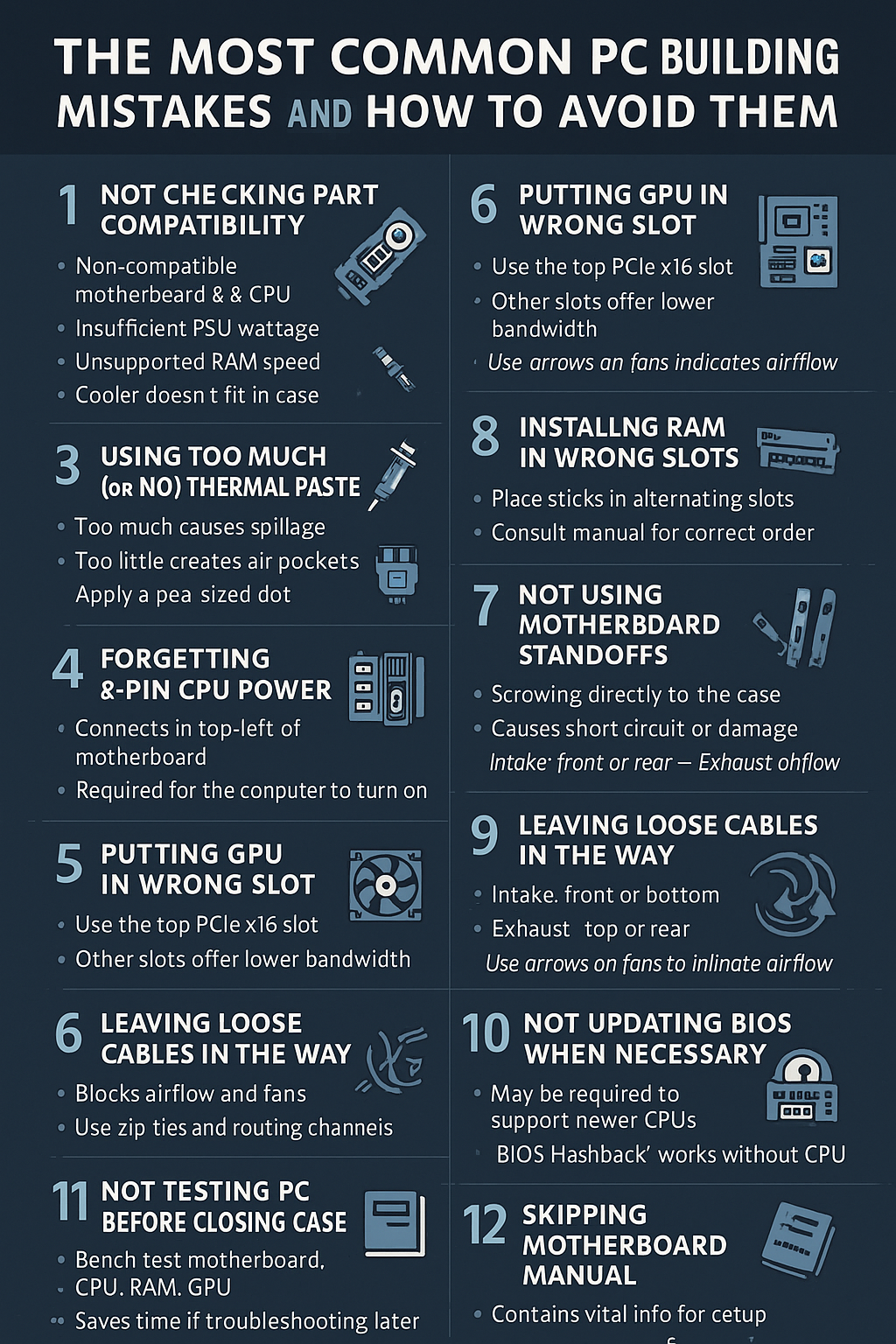Building a PC is exhilarating, but it’s easy to make mistakes that cause poor performance, instability, or even hardware damage. Here are the top missteps in 2025—and how to avoid them:
1. Not Checking Part Compatibility
- Avoid mixing incompatible CPU, motherboard, RAM, PSU, or cooler
- Avoid mistakes by:
- Using PCPartPicker for compatibility checks
- Reviewing manuals and part specifications (TDP, socket, connectors)
2. Skipping I/O Shield Installation
- Protects ports and shields from dust
- Always install it before installing the motherboard
3. Using Too Much (or No) Thermal Paste
- A pea-sized drop is enough; too much spreads improperly, too little traps air
- Clean old paste with isopropyl alcohol and use new thermal compound
4. Forgetting the CPU Power Cable (EPS)
- Can’t boot without the 4+4 pin CPU power—don’t overlook this essential connector
5. Installing GPU in the Wrong PCIe Slot
- Always use the top PCIe x16 slot for full GPU performance
6. Installing RAM in Incorrect Slots
- Dual-channel requires the correct slots (usually A2/B2)—check the motherboard manual
7. Not Using Standoffs Under Motherboard
- Direct contact with the case causes shorts—mount on brass standoffs first
8. Incorrect Fan Orientation
- Front/bottom should intake, rear/top should exhaust—check airflow arrows on fans
9. Letting Cables Block Airflow
- Use ties and routing paths to prevent obstruction and keep airflow clean
10. Skipping BIOS Updates When Needed
- If the CPU is newer than the board, a BIOS update may be required
- Consider motherboards with BIOS Flashback functionality
11. Not Testing the Build Before Closing the Case
- Perform a “bench test” with CPU, RAM, GPU, and PSU on cardboard
- Confirm it boots before installing into the case
12. Ignoring the Manual
- Manuals contain crucial info about headers, component placement, and BIOS switches—read them
Final Thoughts: Preventing common mistakes comes down to planning, careful review, and taking your time. Avoid compatibility issues, follow instructions, and always test before finalizing your build.
